Producing and trapping humidity in the green house
When I bought this green house, I did not think I would have such a dry climate on my hands inside. For the cactus that lived in there though the summer this did not matter, they loved the hot dry environment inside. But I found growing seedlings and other humidity loving plants an uphill battle. But I think I can improve the humidity using a mix of sensors, motors, solar power and some misters. Along with a tarp to trap it all in on the ground.
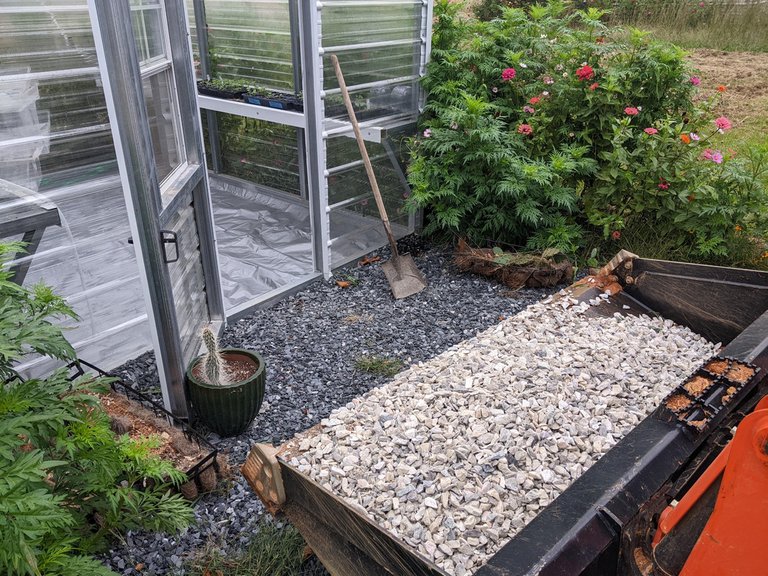
So I have decided to add a moisture barrier to the floor of the green house. So when I am running my misters the water stays inside the building and not soak through the foundation as easily.
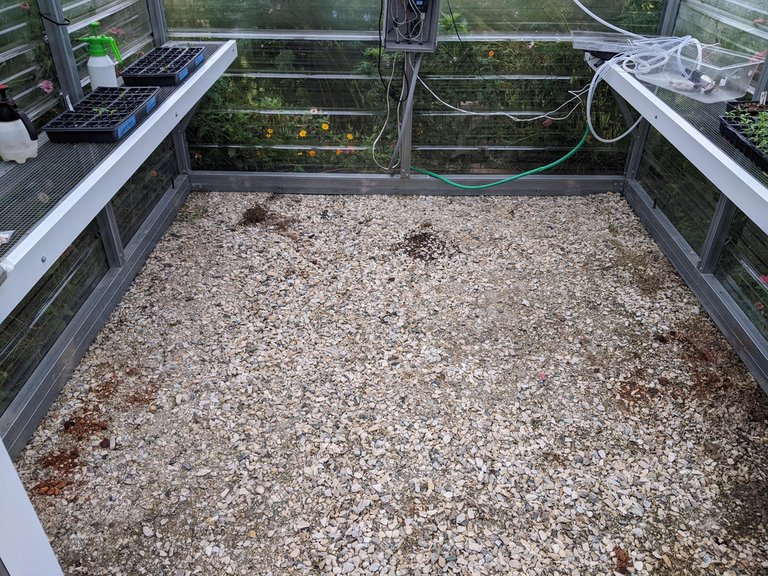
When the green house was delivered it was placed on a foundation of gravel. This seems to be part of the problem, the rocks soak up any dropped water and then it soaks down further into the earth. Making the green house stay very dry. With RH levels in the 20% range I need to bump it up into the 50-60% for adult plants and 70% for seedlings.
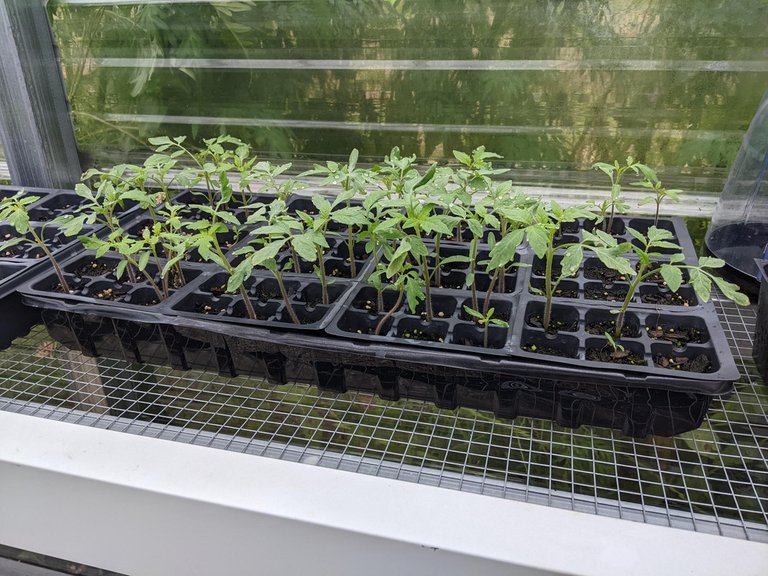
Some plants do not seem to mind as much, such as these tomato plants. But if I ever want to grow cannabis in this green house they are more sensitive to moisture levels in the air.

Other plants seem to struggle from the low humidity. So we have to mist them every day to keep them happy.
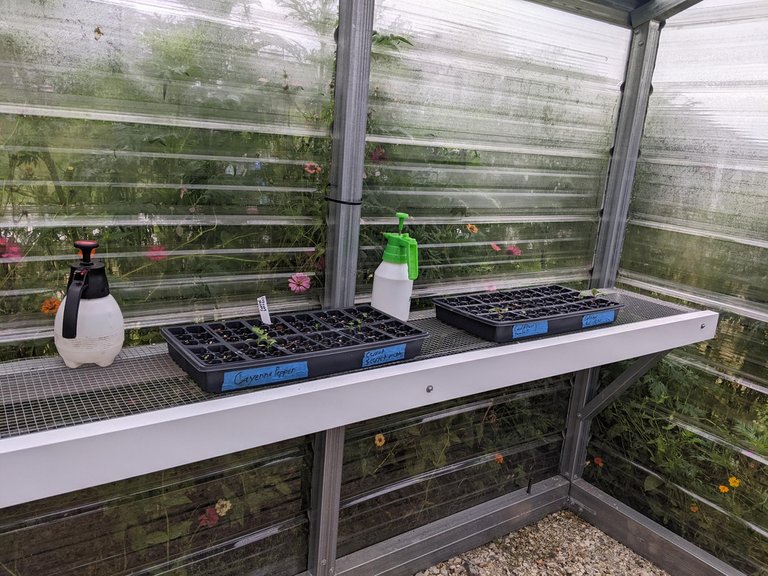
The misters with the trays, the plan is not to need these with my automated system I am building.
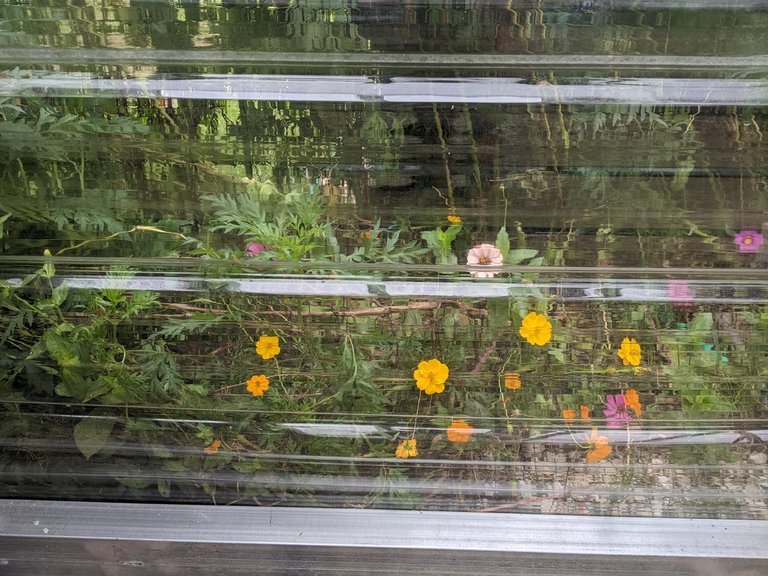
Hah! The wild flowers are getting light through the green house making them flower deep in the brush.
Trapping the moisture:
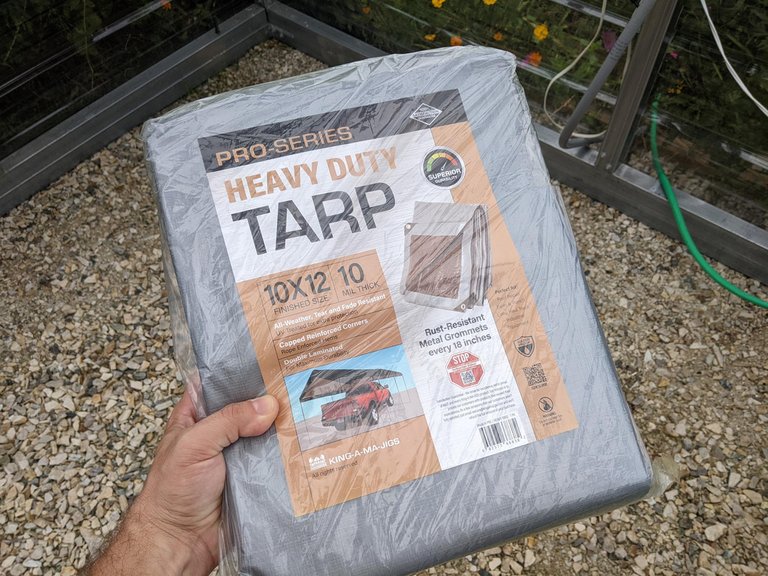
Getting a 10 mil thick tarp we will carefully lay it down across the floor of the green house and then cover it in gravel.

Stretching it out to make sure its good before moving it into the green house.
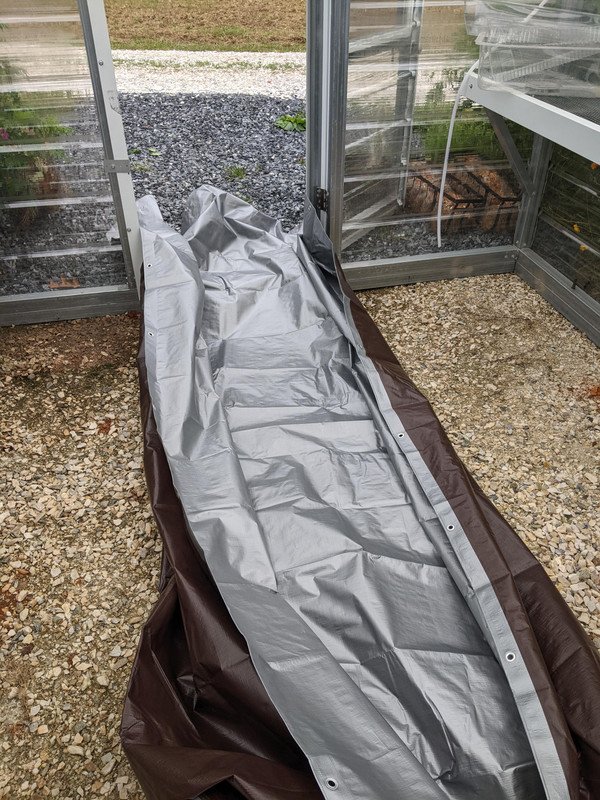
Dragging it into the green house.. the fun of stretching it out is about to begin.

Getting it to all the sides was a challenge but I got it done without ripping it.

Now we need to add gravel, otherwise walking on the tarp it will rip eventually.
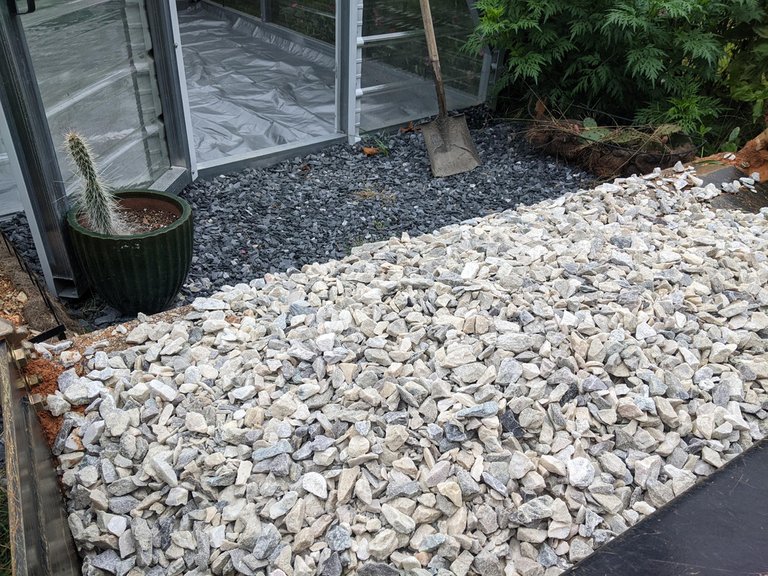
We used number 57 limestone from a local quarry.
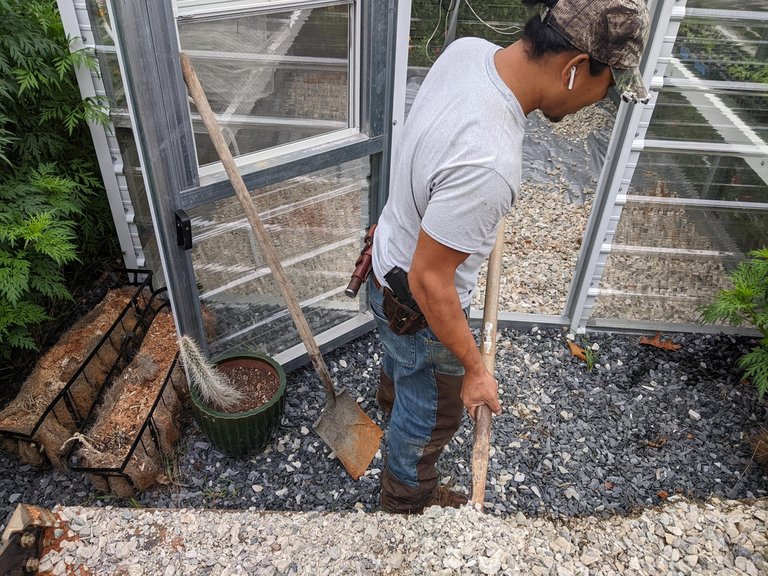
Shoveling it in took about an hour with my foremans help.
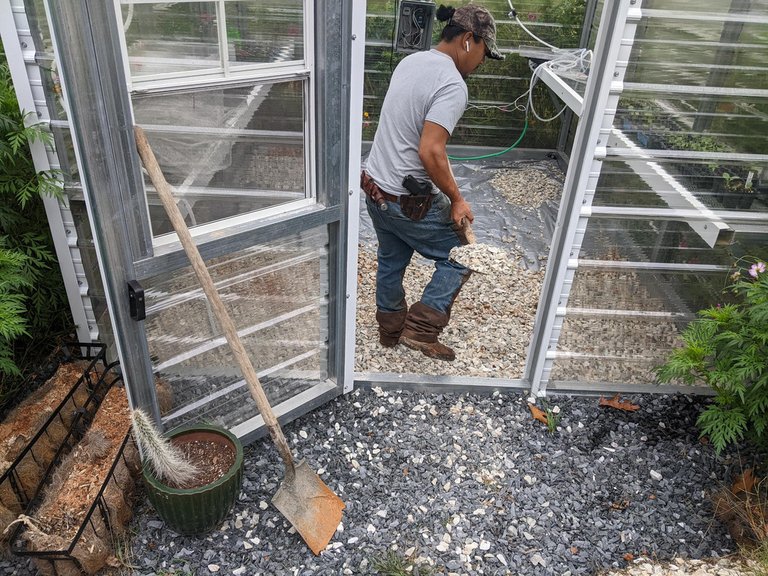
Slowly but surely we add gravel until the tarp disappears.
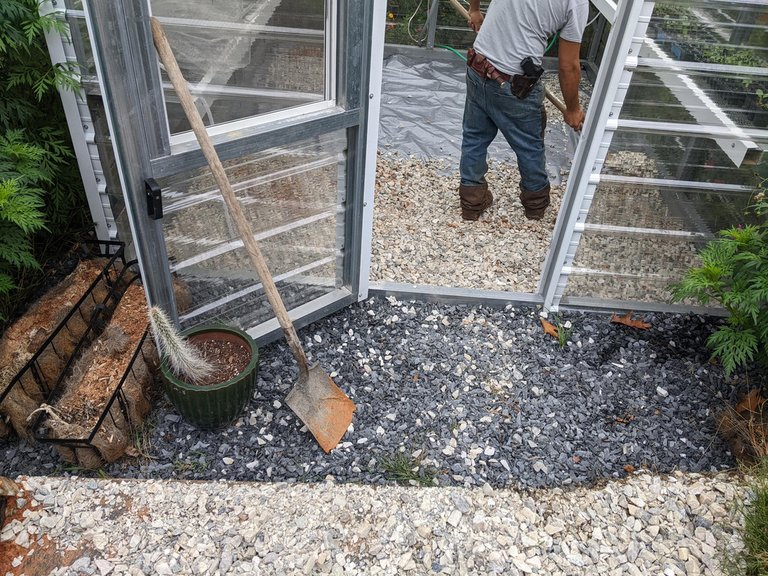
We can feel the heat rising as we work in these, seems like its trapping more than just moisture.

Another load of gravel is brought over, and we shovel it into the green house.
The automated misting system:
Using a solar powered pump and humidity I can set levels of desired humidity, the controller will start and shut off the pump as need be to keep the wanted levels.
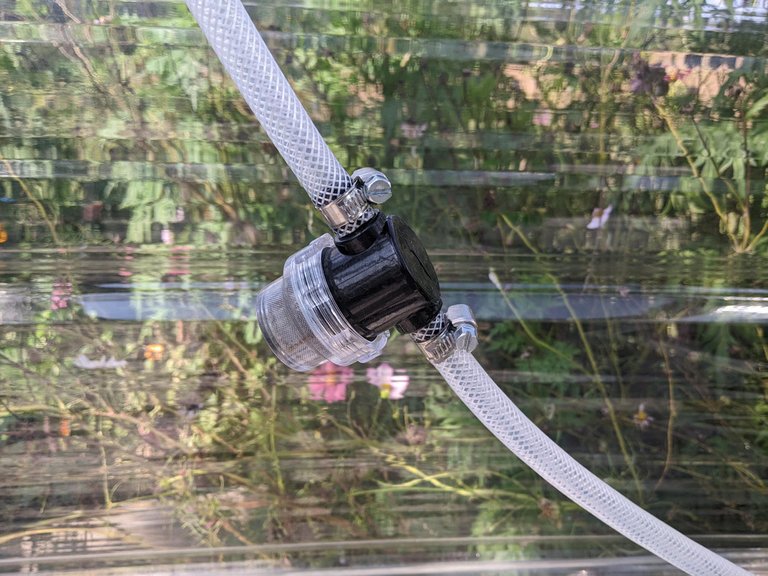
There are a few parts that make this whole system work. And it starts with the filter, without this the misters will get clogged up in no time.
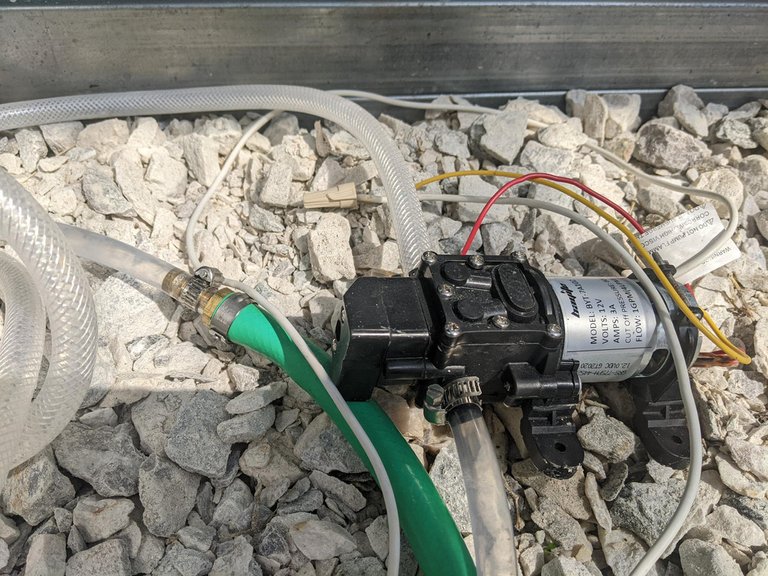
The pump is a 12V 3A motor using 3/8 lines.
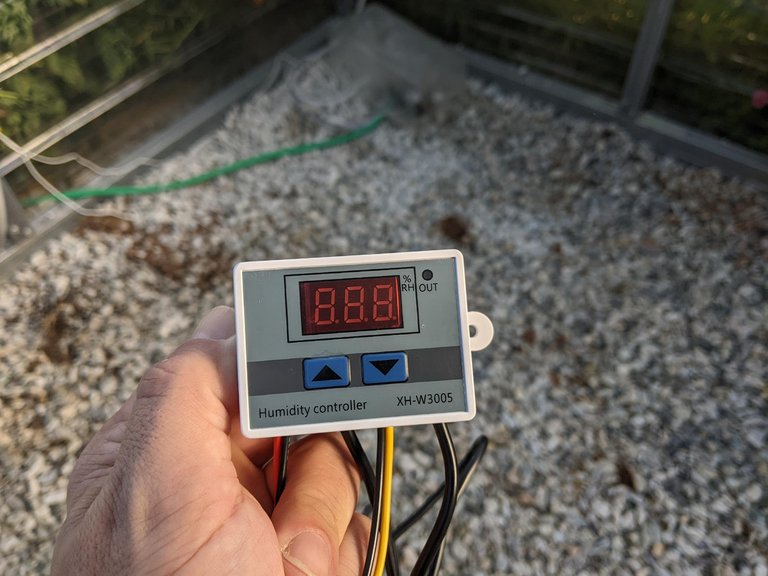
The humidistat is what will keep the humidity from getting too high or too low.

And lastly we have the pex lines with mister nozzles screwed in, this will spray the grow area with water.
Wiring up the misting system:

We must take apart of the humidity sensor to fit it through the wire glands on my enclosure. I try to keep everything water tight the best possible as the misters turn the green house into a tropical storm of water.. lol
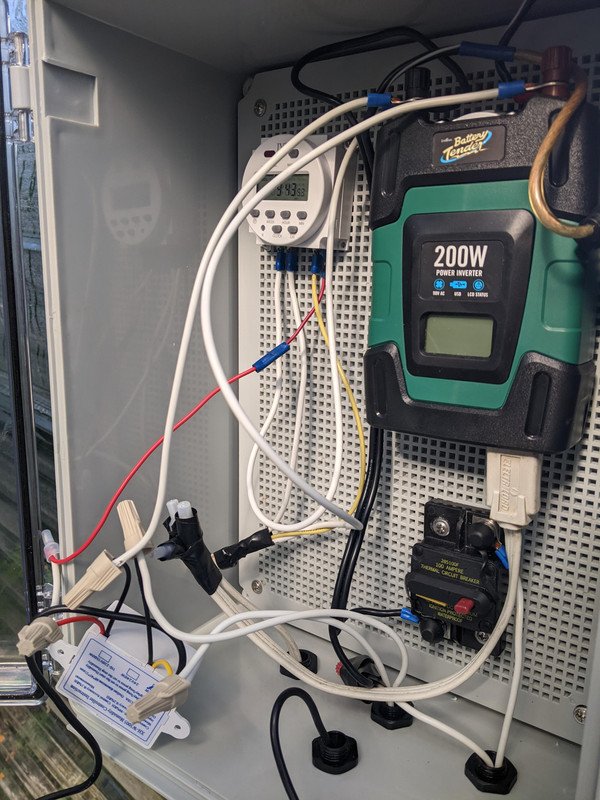
With it all passed through the enclosure I secure with wire nuts to test, and then follow up by taping it all together once I confirm it works.
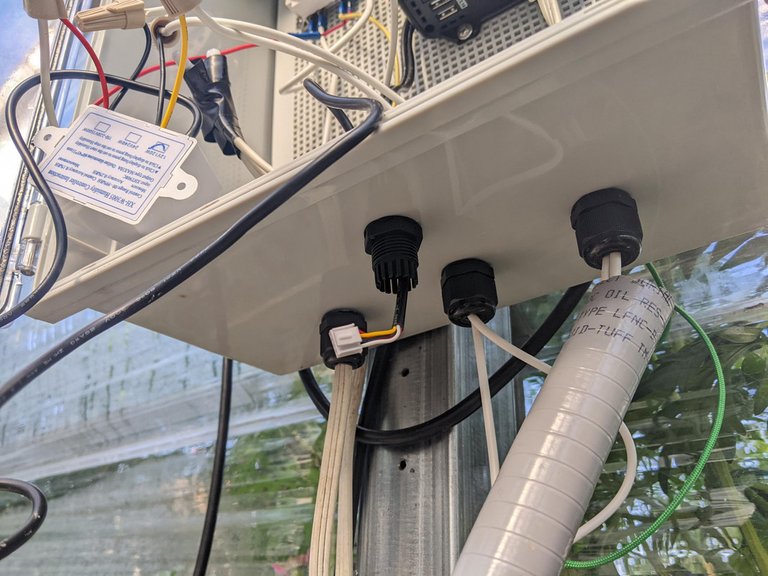
With the sensor wire pulled through I can reconnect it.

That little diode is what senses the humidity.

With it all taped up its ready to be secured.
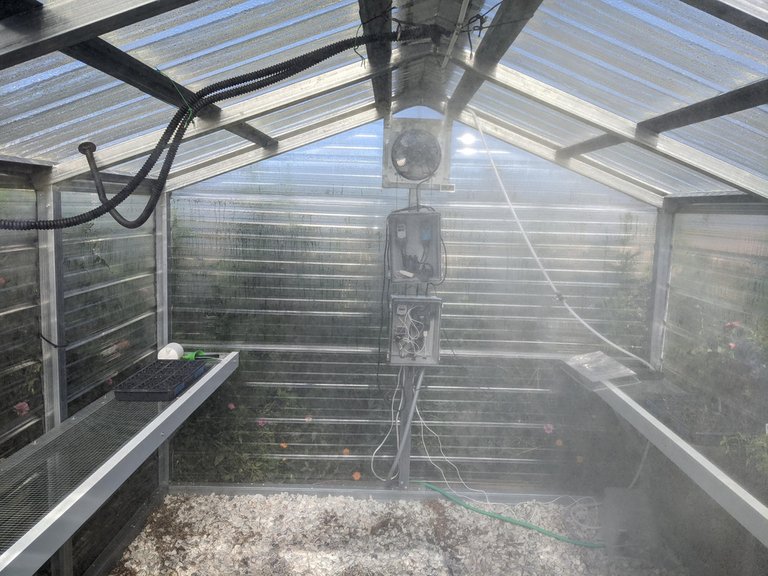
Its time time to test the misters! They work! I need to work on their positioning, as it seems one side is getting more misted than the other, but thats fine I can work that out later.

I just ran the misters for a few minutes until the room was completely saturated with water.
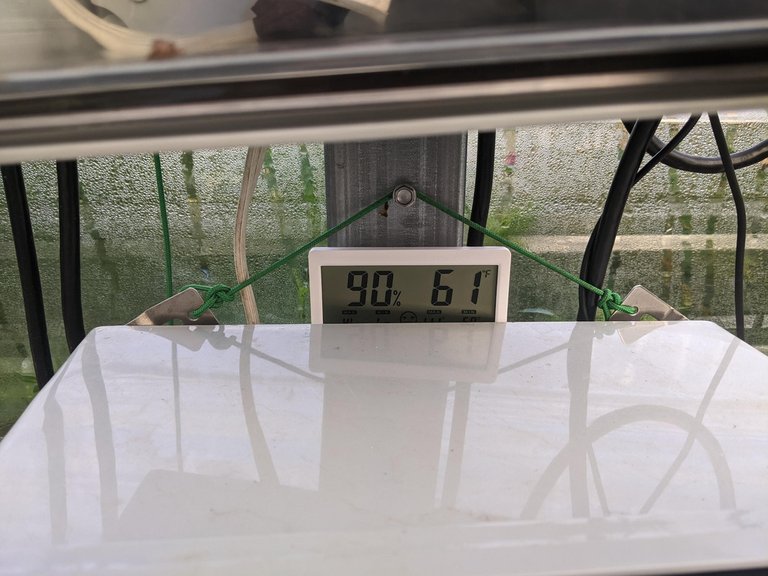
Seems my different humidity sensors give different readings, but good to see it is raising the humidity much higher than the 20-30 percent it would stay at without them. Even trying to run two foggers full time in the green house only nets me around 35% so I think adding lots of water via the misters controlled by the humidistat is the way to go.
So what's next?
I need a more steady supply of water, for testing this I used a 55 gallon water barrel. And it would seem to keep the humidity high would go through more than the entire barrel each day. So I plan on having a plumber add a hydrant next to my green house that feeds off the well. That way we have a constant supply of water without risk of running out when the barrel runs dry.
Posted with STEMGeeks
You are doing an excellent job, automating irrigation is very practical.
It seems like a viable solution for moisture loss with the canvas floor. Success dear friend
May you enjoy the weekend
Much appreciated, I do hope trapping in the moisture with the tarp helps a long with the misters.
Thanks! You too
lush plants.. how are you today friends...
thanks man, doing well.
You are welcome, friend
Hope ya'll have a good day too
This is a kind of good ideas you did my friend. Irrigation is quitely difficult and tricky. I gained more ideas about your post my friend.
So true.. getting the irrigation is proving to be quite the challenge. But I think I will get it done.
Nice.. glad you learned something from my post.
Yes and I gained a lot of lesson from your article my friend.
Good job, man. Low humidity in the greenhouse is a problem every farmer has. It can be tiring to constantly supplement water, but I don't know how else you can find a solution. All I can do is wish you good luck!
I had no idea it would be such a problem, well I guess I am learning by living it.
I think I will have this covered with the misters, the question is just how much water do I actually need in the intense summer time. The green house gets very hot and will cook off that moisture in no time.
Wow! This is impressive I'm loving the style of this greenhouse and the setup you're building. What plants do you think you'll be growing in here for the high humidity?
Much appreciated.. hopefully I can grow cannabis in there once I dial in the moisture.
I didn't know your work with plants yet. I wish I could have the patience and dedication to obtain some, but perhaps it wouldn't last long. Carnivorous plants in particular.
Ah okay.. yeah patience is key and best of luck growing some carnivorous plants. I know they like very high humidity.
Damn that's a impressive set up with the misters and all
Thanks man, it's been a work in progress for the last year. But now it's all coming together.
You've been curated by @amazingdrinks! Delegations welcome!
Ah thanks much for the curation
Nicely done!!! I wasn't too sure about using the tarp on the ground, but once I saw you got a heavy duty - thick one - I was like, oh yeah, that will work!!! What do you do for heat in there during the winter - or cold season lol....
Much appreciated, yep I got an extra thick tarp just for that reason. I could have gone one more level up in mil thickness but I think this is good enough, I guess long term we will just find out.
My green house is not heated, so I only keep cold hardy plants in there such as some cacti right now. I have a few pricky pear cultivars that can handle extreme cold. Maybe one day I will pipe in heat from my upcoming wood furnace project, but for now its just a spring/summer/fall grow area.
Hi. Nice pictures and commentary. I can see it made to the trending posts about STEM. Congrats.
Thanks bud, oh cool did not realize that.